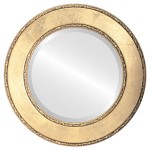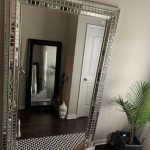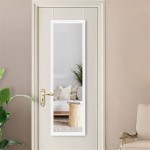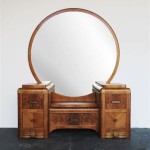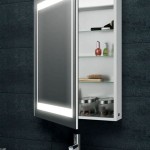Antique Victorian Wall Mirrors: A Reflection of History and Style
Antique Victorian wall mirrors offer a captivating glimpse into the artistry and craftsmanship of the 19th century. More than mere reflective surfaces, these mirrors served as decorative focal points, enhancing the aesthetics of Victorian interiors and reflecting the era's social and cultural trends. Understanding their historical context, stylistic features, and methods of identification can assist collectors and enthusiasts in appreciating the unique beauty and value of these antique pieces.
The Victorian era, spanning the reign of Queen Victoria from 1837 to 1901, witnessed significant changes in manufacturing processes, leading to increased availability and affordability of decorative items like mirrors. Advances in glassmaking, particularly the development of silvered glass by Justus von Liebig in 1835, revolutionized mirror production. This technique, which replaced the use of mercury, provided a clearer and more durable reflection.
Victorian wall mirrors are characterized by a wide range of styles and designs, reflecting the eclectic nature of Victorian taste. Gothic Revival, Rococo Revival, and Aesthetic Movement influences are evident in many examples. Gothic Revival mirrors often feature pointed arches, trefoil motifs, and intricate tracery reminiscent of medieval architecture. Rococo Revival mirrors exhibit ornate, asymmetrical designs incorporating C-scrolls, shell motifs, and floral garlands. The Aesthetic Movement, which embraced "art for art's sake," favored simpler, more geometric forms, often incorporating Japanese design elements.
The frames of Victorian wall mirrors are typically crafted from wood, often gilded or ebonized. Popular wood choices included mahogany, walnut, and rosewood. Gilded frames, achieved by applying gold leaf or paint, were particularly fashionable and added a touch of opulence to Victorian homes. Ebonized frames, created by staining wood black to mimic ebony, provided a dramatic contrast against lighter wall colors. Other materials used in frame construction include gesso, plaster, and papier-mâché.
Several key features can help identify authentic antique Victorian wall mirrors. Examining the glass itself is crucial. Early Victorian mirrors often have a slightly wavy or distorted reflection due to imperfections in the early silvering process. Later Victorian mirrors tend to have a clearer reflection due to advancements in glassmaking technology. Evidence of foxing, age-related spotting or discoloration of the mirror's silver backing, can also indicate age.
The frame's construction and materials offer further clues. Hand-carved details and intricate joinery are indicative of handcrafted Victorian frames. Machine-made frames, which became more prevalent towards the end of the Victorian era, often exhibit less intricate detailing. Examining the back of the mirror can reveal the original wood and construction methods. Original backing boards and hanging hardware can provide valuable insight into the mirror's age and authenticity.
The size and shape of Victorian wall mirrors varied considerably, ranging from small handheld looking glasses to large, elaborately framed mirrors designed to dominate a room. Overmantel mirrors, positioned above the fireplace, were a prominent feature in Victorian parlors. These mirrors often incorporated decorative elements such as shelves, brackets, and candle sconces. Cheval mirrors, full-length mirrors mounted on a stand, also gained popularity during this period.
Caring for antique Victorian wall mirrors requires careful attention to preserve their historical integrity and beauty. Dusting regularly with a soft, dry cloth can prevent the buildup of grime. Avoid using harsh chemicals or abrasive cleaners, which can damage the frame or mirror surface. Extreme temperatures and humidity fluctuations should be avoided to prevent warping or cracking of the frame. If restoration is required, consulting a qualified antique furniture restorer is recommended.
Antique Victorian wall mirrors represent more than just reflective surfaces; they are artifacts of a bygone era, reflecting the aesthetic sensibilities and craftsmanship of the 19th century. Their diverse styles, intricate details, and historical significance make them highly sought-after by collectors and interior design enthusiasts alike. By understanding the key characteristics and identifying factors of these antique pieces, one can appreciate the unique beauty and historical narrative embedded within each reflection.
The market for antique Victorian wall mirrors varies considerably depending on factors such as the mirror's size, condition, rarity, and provenance. Smaller, simpler mirrors may be more affordable, while large, elaborately framed mirrors in excellent condition can command significantly higher prices. Mirrors with documented historical provenance, such as those originating from prominent estates or with connections to notable historical figures, can be particularly valuable.
When purchasing an antique Victorian wall mirror, it's essential to conduct thorough research and examine the mirror carefully. Reputable antique dealers and auction houses can provide valuable expertise and authentication services. Looking for consistent stylistic features, examining the construction techniques, and researching the mirror's history can help ensure its authenticity and value.

25x 16 Oval Vintage Decorative Victorian Wall Mirror White Wooden Frame Antique Princess Decor For Bedroom Playroom Dressers Living Room

Uma Vintage Wall Mirror 25 X 39 Homemakers

Full Length Mirror Gold French Wall Vintage Gilded Handmade Victorian Baroque Singapore

Victorian Gilded Wall Mirror 1880 For At Pamono

Vintage Victorian Gold Wall Mirror

Antique Large Ornate Victorian Metal Framed Wall Mirror Chairish

Late Victorian Wall Mirror 1890s For At Pamono

Gilded French Mirror Gilt Wall Gold Victorian Art Vintage Furniture

Antique Victorian Mirrors

Antique Victorian Wall Mirror Candle Holder

